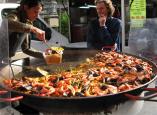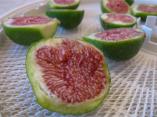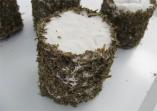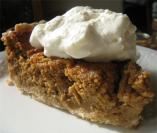In my many years as a migraine sufferer, I have more than once been subjected to tedious, if well-intentioned lectures on the general theme that, contrary to what I might know about my own body, my migraines are entirely due to food allergies.
So I was pleased to read in a back issue of The Skeptic a piece called Unconventional Migraine Treatments, about the widespread misapplication of research into migraines and food allergies. The author, Peter Adamson, unpacks the research in a widely quoted but monumentally inapplicable study called “Is Migraine Food Allergy?” (a sampling of only 88 children – and no adults) which misappropriators use
to ‘prove’ that allergies trigger or cause migraine. (The ambiguous use of allergy in the title permits… use [of] the traditional broad definition, namely ‘unusual sensitivity’, which allows them to include food intolerance.)… None mentioned that the children studied had ‘severe and frequent migraine’, that almost half of them also ‘had behaviour disturbance (mostly hyperkinetic)’, that over a third had rhinitis and 16% had epilepsy.
Not one mentioned the authors’ caution:
However, we cannot securely extrapolate to other groups of patients, such as those with infrequent mild migraine or adults.Nor did they mention the authors’ warning:
Diets are dangerous and socially disruptive, so such treatment should be adopted only when the symptoms are severe and only under experienced medical and dietetic supervision.AACHs having cited this ‘proof’ that migraine is caused/triggered by allergies, then prescribe their favourite, often very restrictive, diets to migraineurs of any age.
(AACHs = alternative and complementary healing systems and their practitioners).
That line about diets being socially disruptive is hugely under-discussed, I feel. Food allergies and intolerances are endemic in our neurotic and chemicalized culture, and many of the resulting diets – paralysing in their restrictions, and making dinner party pariahs of their followers – are, IMHO, the work of quacks who manipulate the anxiety and desperation of people struggling to stay afloat in this anxious and desperate world.
This is not to dispute that there are very real allergies and intolerances to foods out there, but I think the terms are over-used, and, as explained above, inappropriately used, at worst by some “practioners” to make money from vulnerable people. I also believe writers like Felicity Lawrence who propose that allergies and intolerances may be caused by eating processed foods, not by the pure form of the food; she made this argument memorably about commercial bread in her book Not on the Label. You’ll hear the same argument from Red Fife Wheat growers. I think the toxins present in chemical fire retardants or plastic cookware or fast foods deserve a wide berth, instead of heaping blame on good quality, nourishing food.
To those who have suggested to me that I try cutting back on wheat or dairy or tomatoes or whatever the latest dietary demon is in order to see if it helps my migraines, my answer is and will always be that I would prefer to live a normal, sociable life, eating what I please. And what I please does not include most fast or processed foods. It does include wine, cheese, chocolate and coffee in varying amounts which I do not find cripple me consistently or even occasionally. Even if there actually is a food issue at the root (which I doubt) (I choose to blame my ancestral fellow-sufferer, name of Granny, and all the grannies before her) I am prepared to suffer a day or two a month for a mostly normal life. That’s maybe 25 days of discomfort against 340 days of enjoying my food; not a bad ratio.
And if I am to enjoy my food when eating out, I’d like to do it without being deafened by my neighbours or have conversation drowned in “ambient” dance music. And at last! Someone has pointed out the acoustical failings of contemporary restaurant design. Of particular value is this list of pointers if you want to make sure of a quieter dining experience:
- Sit in tables in alcoves, which provide a barricade against sound waves.
- Avoid sitting by the bar or kitchen.
- Avoid sitting near large parties, who tend to talk louder.
- Ask for additional light and look at your dining companion. Without realizing it, we read lips.
- Ask management to turn the music down, even if you get dirty looks. Not only does this reduce noise, but people will then talk more softly.
- Look at photos of the restaurant ahead of time. No carpet or tablecloths and boxy dimensions should raise red flags.










3 Responses to Food & migraines